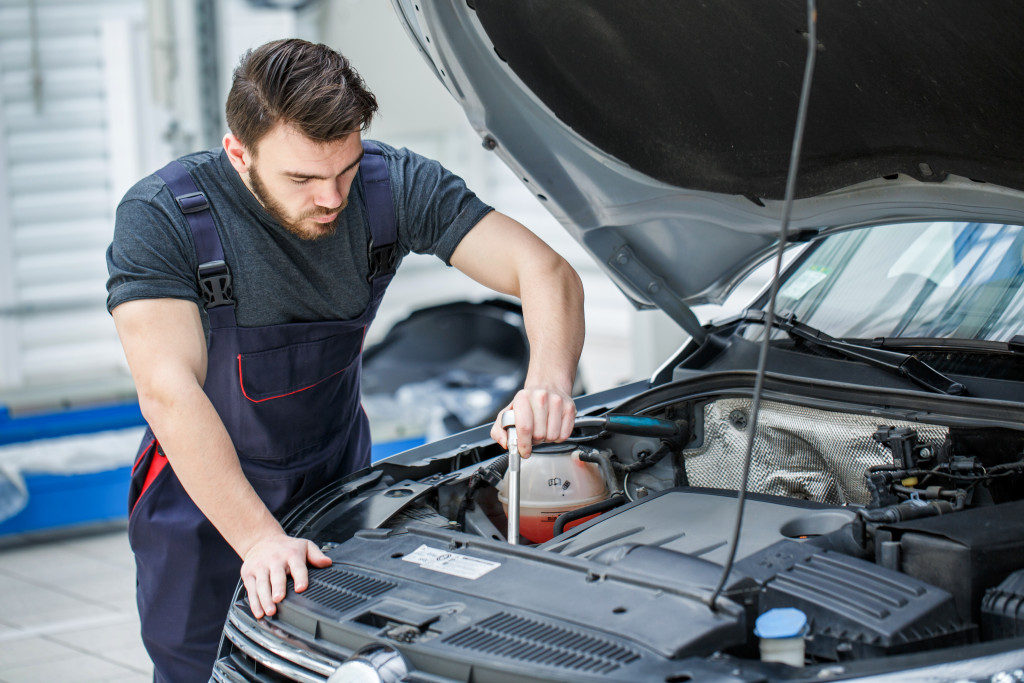Although most occupational dangers can be the leading cause of various physical health hazards, not all work-related injuries are limited to offices and industrial facilities. Data suggests that mechanics, engineers, and technicians have witnessed and experienced around 13,000 non-fatal injuries and health complications in auto-shops and other facilities related to fixing vehicles and manufacturing parts.
As traditional cultural boundaries are starting to make way to more modern values, both men and women are now working side-by-side, especially when it comes to male-dominated industries, like auto repair work. But even if there’s already an increase of women at the industrial workplace, men still dominate the auto repair business. More men in the industry play a vital role in the figures related to occupational hazards. It’s known that men are more likely to make injury claims based on occupational hazards and injuries. This will often result in decreased productivity at work since injured workers will need time to recover from injuries.
Since much of this occupation will involve moving industrial machinery, chemicals, and heavy-duty tools, employees must be aware of their surroundings. Almost every workplace injury can create a cascade of the efficiency in the establishment. Once someone gets injured, someone else will need to shoulder their work, which can add stress to working. If the negligence is caused by the employer, this might also have legal repercussions while handling medical costs by the injury.
So what are some ways of staying safe when fixing vehicles? What are some hazards that you’ll need to keep in mind? Here’s what you’ll need to know.
Education, Health, and Safety
One of the best ways of preventing workplace injuries, especially in auto-shops, is educating employees and cultivating a culture of health and safety. You can start by educating them on some of the most prevalent types of accidents in auto shops, then providing them with regular safety training. At work, abiding by important safety guidelines is a must.
Injuries in the auto repair industry are known for being so common that the Occupational Safety and Health Administration has provided information on safety standards. All auto repair shops have to comply with these standards.
So what are the most common types of injuries that mechanics and technicians face in shops? Here are some of the known dangers.
Chemical Hazards

It’s important to note that auto repair shops will also need to handle various chemicals and substances necessary to keep vehicles operational. Most workers will need to take materials that can cause long-term health complications and flammable liquids throughout daily operations.
Normally, vehicle batteries contain strong acids that have to be replaced so that the electronic parts of the car or motorcycle will remain in good condition. If you’re working on chemical containers, most should have a pictogram and precautionary statements. Some might also include ways of handling such a box.
What’s a great way of minimizing exposure to chemicals inside batteries and other substances? Well, most high-quality materials are generally more sturdy than their lower-quality counterparts. ; Fortunately, you can buy high-quality, durable, and long-lasting car and motorcycle batteries online. Having high-quality batteries for vehicles means that it will last longer, which helps decrease the frequency of repairs, mitigating the likelihood of exposing workers to volatile chemicals.
Still, most chemical containers around the shop should be checked daily or routinely to ensure no leaks. Sometimes, spoilage can happen among certain substances. Thus, workers must have protective glass and corrosion-resistant gloves when handling such chemicals.
Loss of Limbs
A lot of auto repair workers will have to operate a variety of heavy-duty machinery and tools. This can come in the form of electric metal-cutting cheers, grinders, and cutters. Although there is already some automated mechanical equipment that will automatically stop when it comes into contact with people, some equipment can still cause the loss of limbs.
Education and proper training is the best way of minimizing injuries relating to limb loss. Wearing personal protective equipment when operating power tools should also be another top priority. Lastly, tools should be adequately maintained and continuously checked to ensure workplace accidents are kept at a minimum.
Slip and Falls
Most of the time, day-to-day operations on repair shops will involve various greasy substances since this is needed to lubricate machinery. This can often make floors slippery, which can cause accidents. You might want to instruct your employees to wear rubber working boots that can stop skidding and slipping.
There are various health hazards that employees will need to be mindful of in the auto repair shop. Although protective equipment might be an additional cost, it’s way better than having to spend on medical expenses. It’s crucial to be alert in any given situation. After all, safety should always be the priority in the workplace.

